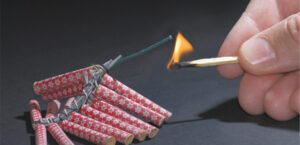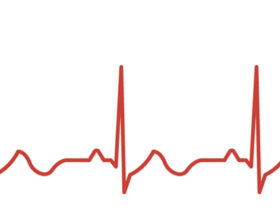By Dennis O. Sagini, MD
 Firework-related injuries to the upper extremity represent a significant public health concern, particularly during holiday celebrations and festive events. The hands, wrists, and arms are among the most commonly affected body regions in firework accidents, accounting for approximately 30-40% of all pyrotechnic injuries. Understanding the nature, severity, and prevention of these injuries is crucial for both healthcare providers and the general public.
Firework-related injuries to the upper extremity represent a significant public health concern, particularly during holiday celebrations and festive events. The hands, wrists, and arms are among the most commonly affected body regions in firework accidents, accounting for approximately 30-40% of all pyrotechnic injuries. Understanding the nature, severity, and prevention of these injuries is crucial for both healthcare providers and the general public.
Common Types of Upper Extremity Firework Injuries
Upper extremity firework injuries typically fall into several categories, each presenting unique challenges for treatment and recovery. Thermal burns are the most frequent type, ranging from superficial first-degree burns to deep third-degree burns that may require skin grafting. These injuries often occur when individuals hold fireworks too long before throwing them or when malfunctioning devices explode prematurely.
Blast injuries represent another serious category, characterized by tissue disruption, fractures, and potential traumatic amputations. The explosive force can cause devastating damage to bones, soft tissues, and neurovascular structures. Fragment injuries occur when debris from exploding fireworks penetrates the skin and underlying tissues, sometimes requiring surgical exploration and removal.
Flash burns affect the skin surface and can cause significant scarring, while chemical burns may result from contact with the various compounds used in firework manufacturing. Combination injuries, involving multiple mechanisms simultaneously, are unfortunately common and often result in the most severe outcomes.
High-Risk Demographics and Circumstances
Statistical data reveals that young adults and teenagers, particularly males aged 15-25, are disproportionately affected by firework-related upper extremity injuries. This demographic often engages in risky behaviors such as holding fireworks in their hands, attempting to relight “duds,” or using homemade explosive devices.
Alcohol consumption significantly increases injury risk by impairing judgment and reaction times. Many injuries occur during unsupervised celebrations or when individuals attempt to handle professional-grade fireworks without proper training or safety equipment.
Treatment Approaches and Complications
Initial treatment of upper extremity firework injuries focuses on airway management, hemorrhage control, and pain relief. Severe burns may require immediate fluid resuscitation and specialized burn center care. Surgical intervention is often necessary for deep burns, traumatic amputations, fracture repair, and foreign body removal.
Complications can be significant and long-lasting. Infection remains a primary concern, particularly with contaminated blast wounds. Scarring and contractures may severely limit hand function and require extensive rehabilitation. Nerve damage can result in permanent sensory or motor deficits, while vascular injuries may compromise circulation and tissue viability.
Prevention Strategies
Prevention remains the most effective approach to reducing firework-related upper extremity injuries. Public education campaigns should emphasize proper firework handling techniques, including never holding fireworks in the hand and maintaining safe distances from spectators.
Professional firework displays offer safer alternatives to personal use. When individuals choose to use consumer fireworks, proper safety equipment including eye protection and having water or fire extinguishers readily available is essential. Never attempting to relight malfunctioning fireworks and avoiding alcohol consumption during firework activities are critical safety measures.
Legislative efforts to regulate firework sales and use, combined with increased public awareness of injury risks, represent important components of comprehensive prevention strategies.
Understanding the serious nature of firework-related upper extremity injuries can help individuals make informed decisions about firework use and encourage safer celebration practices. For specialized consultation regarding upper extremity injuries, contact Dennis O. Sagini, MD at 239-302-3216.
Dennis O. Sagini, MD
Dr. Sagini is an orthopedic surgeon with specialization in hand and upper extremity surgery. He specializes in arthritis of the hand, nerve compression, muscle and tendon injury, fracture care, and upper extremity dysfunction.
He completed his Bachelors of Science in Microbiology from the University of Oklahoma in Norman, Oklahoma in 1998 and his Doctor of Medicine at Temple University in Philadelphia, PA in 2002. It was during medical school training that Dr. Sagini developed an interest in orthopaedic surgery. His residency in orthopaedic surgery was completed at Howard University Hospital, Washington, DC. Dr. Sagini completed his fellowship training in Hand and Upper Extremity surgery at the University of Pittsburgh Medical Center in Pittsburgh, PA.
Dr. Sagini is a member of the American Academy of Orthopaedic Surgeons, the American Medical Association, the Florida Medical Association, and the American Society for Surgery of the Hand.
Dr. Sagini is active in research and community service and has a passion for overseas medical mission work. He also enjoys running, traveling, listening to music, cooking, tennis, and spending time with his family and friends.
239-302-3216 | saginimd.com
13691 Metro Pkwy, Suite 400
Fort Myers, FL 33912









